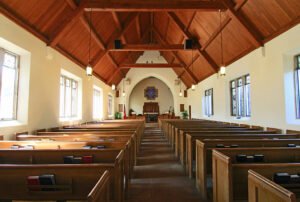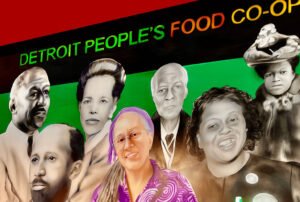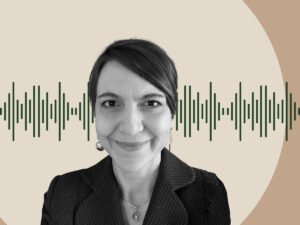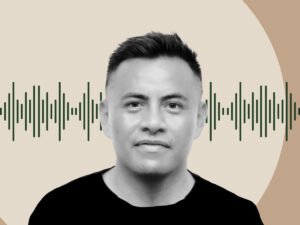
October 13, 2020; Next City
Chicago takes pride in its neighborhoods. That pride’s lessened when looking at the ones that were neither created nor treated equally. The mostly Black and Latinx neighborhoods of the city’s South and West Sides stand as examples of the harm that comes of white supremacist design of and disinvestment in neighborhoods. Recently, a new level of interest has arisen in funding neighbor revitalization efforts but as money begins to flow to places it has been kept scarce, the pressing question is whose voices will lead the way—community residents, or political and corporate leaders?
Last year, newly elected Chicago mayor Lori Lightfoot announced a redirection of $750 million of city funds for projects in 10 underinvested neighborhoods. Under the banner of Invest South/West, the city sought to maximize “public investments in order to attract significant additional private and philanthropic capital, respond to changing commercial trends, and enrich local culture.” The program “supports infrastructure development, improved programming for residents and businesses, and policies that impact each of the community areas surrounding these corridors” in a lasting way.
The level of disinvestment that demands redress is immense. WBEZ documents that “for every $1 banks loaned in Chicago’s white neighborhoods, they invested just 12 cents in the city’s black neighborhoods and 13 cents in [Latinx] areas. That’s despite the fact that there are similar numbers of majority-white, black and [Latinx] neighborhoods in the city.” The Chicago Sun-Times studied how property values were also skewed; they found that “from 1980 to 2015, homeowners in white neighborhoods have gained wealth at twice the rate of homeowners in Black and [Latinx] communities. The study also found the racial makeup of a neighborhood plays more of a role in home appraisals now than it did in 1980.”
Recognizing that public funds would not be enough, the city envisioned its commitment as a clarion call to private developers to reinvest in communities they had long ago abandoned. But this strategy is gambling that profit will take a backseat to the greater public good. As Next City observed when the program was launched:
There’s no guarantee that everyone with access to private capital will follow. If they do, there’s no guarantee that they will be interested in doing anything but maximizing profits, a move that would almost certainly lead to displacement of the low and moderate income households who have remained on the South Side and West Side of Chicago—especially as Illinois remains one of 37 states with a ban on rent control.
And private funders have begun to step forward. Just this week, Chase Bank announced, as reported by WBEZ, that it will direct $30 billion toward what the bank calls “the largest drivers of the racial wealth divide.” It plans to help “promote homeownership, grow Black- and [Latinx]-owned businesses, and improve access to banking in Black and [Latinx] communities.” Six hundred million dollars was specifically targeted to investment in Chicago’s historically underinvested communities.
Sign up for our free newsletters
Subscribe to NPQ's newsletters to have our top stories delivered directly to your inbox.
By signing up, you agree to our privacy policy and terms of use, and to receive messages from NPQ and our partners.
In launching Invest, newly appointed Planning Commissioner Maurice Cox recognized the importance of the local voice: “There is an amazing network of community partners already in place who have been working for years to lift these places up. When we call a meeting, hundreds of people show up. That is an absolute requirement for the type of work we’re talking about doing…All throughout the process, we are going to be coming back to communities to meet with them at their level, to constantly check that our strategies are in line [with their priorities].”
Speaking to Next City, Asiaha Butler, a community-based developer and leader of RAGE (the Resident Association of Greater Englewood), expressed concern that Cox’s words will not be remembered. The city will continue to ignore local developers and homeowners and give priority to developers from outside the community. As she described it in an interview with WBEZ, she wants investments to be made “with us and not for us.”
One example of the many community developed plans that want to be at the front of the line for this new level of interest in their community is Go Green on Racine, which is “an equitable development neighborhood initiative” that comprises “a Fresh Market Co-operative; an innovative repurposing of a former Chicago Public School as a hub for supportive housing, reentry services and green enterprise; and a mixed-use development with housing, a business incubator, and a famous Italian restaurant all inside.” With strategies like “transit advocacy” and “a housing vision,” Go Green “will have centrally located amenities and programs benefitting residents and entrepreneurs alike with integrated supports so they can thrive.”
Butler worries that plans like these and the needs of individual homeowners will be ignored. In comments to Next City’s Oscar Perry Abello, she says, “There’s a risk that [the planning department] and the city of Chicago could have a whole other plan that could drive up the market that wouldn’t help by driving up the market so the folks we want to sell to wouldn’t be able to afford to stay.” Abello himself notes, “It’s also alarming when the city sells portfolios of buildings containing hundreds of units, some of them vacant, reportedly without telling anyone—including local aldermen. The deep-pocketed buyers of those buildings may have plans for those buildings and neighborhoods that don’t include current residents.”
The Chicago Community Trust, leading the way for the philanthropic sector, is trying to use its resources to strengthen the ability for community-based developers to succeed. Through its Neighborhood Investment Strategy, it’s putting $2 million of its own cash toward creating a fund that will “close the racial wealth gap” by increasing “financial investments in underinvested majority Black and Latinx communities.”
Equitable real estate development is an essential outcome of an impactful and just investment ecosystem, one in which developers of color can compete fairly with their white counterparts for project opportunities and capital to finance those projects [that aim] to support community-based Black and Latinx developers.
The Trust plans to plans to “raise money from corporate or individual donors on an ongoing basis.”
For Butler, even in a moment when historic patterns have been exacerbated by the impact of COVID-19, there is hope that the new level of awareness of the harm that needs to be undone will lead to a new outcome. “When I think about the things keeping me going, one is this moment in history when so many systems are being examined for racial injustice, and possibly dismantling them. The conversation around reparations isn’t a weird thing now.”—Martin Levine












